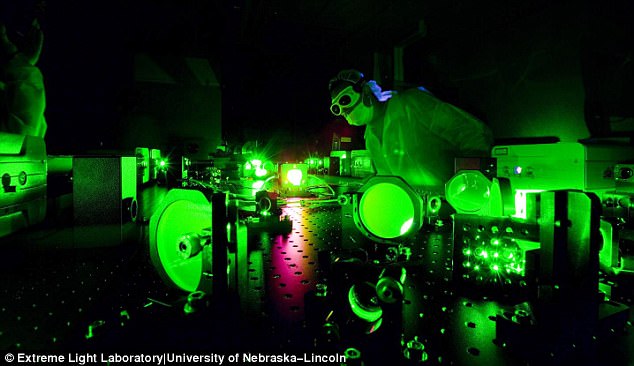
A team of physicists from the University of Nebraska-Lincoln experimented at their Extreme Light Laboratory, which produced an extremely bright light. A laser beam was thrown at helium suspended electrons that emitted light brighter than the Sun. The
intensity of the emitted light was so high that it could work equivalent to X-rays. The experiment would guide many more experiments that couldn’t be completed due to lack of technological limitations.Light brighter than the Sun? Can it be? Really?
Physicists from the University of Nebraska-Lincoln produced a light one billion times brighter than the Sun. Scientists in the Extreme Light Laboratory directed an ultra-high intensity laser beam known as ‘Diocles’ on to the helium-suspended electrons that produced extremely bright light.
The light phenomenon helped physicists observe all new set of patterns in the interaction between light and matter. The changes observed created such X-ray pulses that possibly can generate high-resolution images which would be helpful in medical scans and security systems.
The main focus was to measure how a photon would scatter after colliding laser beam with an electron.
Donald Umstadter explained that when a light either from a bulb or the Sun strikes any surface, the scattering phenomenon enables the visibility of the objects. Normally, an electron scatters a single proton at a time, and not all electrons enjoy that privilege. But in this laser-experiment, a single electron emitted almost 1000 photons at a time.
Within that ultra-high intensity range, both photons and electrons showed varied behaviors from their usual characteristic patterns.
“When we have this unimaginably bright light, it turns out that the scattering — this fundamental thing that makes everything visible — fundamentally changes in nature,” said Umstadter, the Leland and Dorothy Olson Professor of Physics and Astronomy.
Researchers also gathered that the ejected photons carried the collective energy of scattered photons, making it behave like an X-ray. This light that is equivalent to X-ray has a narrow range of energy that could generate 3-D images on a nanoscopic level.
The experiment will support the hypothesis which couldn’t be completed due to lack of technological limitations. Physicists said that it actually was a textbook experiment.
Umstadter and his colleagues received support from the Air Force Office for Scientific Research, the National Science Foundation, the U.S. Department of Energy’s Office of Science, the Department of Homeland Security’s Domestic Nuclear Detection Office, and the National Science Foundation of China.
Comments
Post a Comment